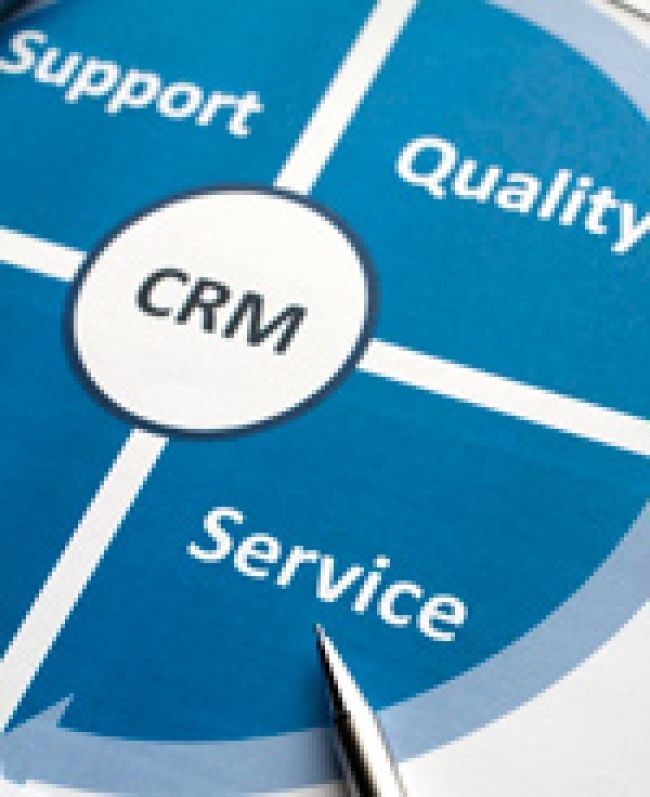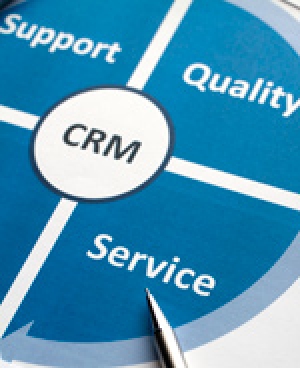
Effective Customer Relationships for Crew Leaders

In iP’s earlier installments of the Supervisory Series (April 2011, June 2011, August 2011, October 2011 and December 2011), we discussed the importance of career development for lineworkers targeted for supervisory responsibilities. We also discussed the supervisory skills required to be effective as a crew leader or foreman, including a full article on human behavior and communication skills. Installments 4 and 5 dealt with crew best practices and safety management, respectively.
In this installment, we will discuss the foreman’s role in customer relationships.
The Operations Department has Customers?
A good place to start the discussion about customer relationships is to agree that we in operations have them. This is not intuitive for operations department personnel. Our job in operations is to keep the system operating, to do the field work required to keep the lights on, right? Sure, occasionally a crew has to deal directly with public. We try to smile and say, “Yes, ma’am.” Then we get out of there and get on with our real job. Dealing with the customer is a necessary evil.
Sound familiar? It should. Most powerline crews, whether employed by a utility or a contractor, hate dealing with the customer. The prospect of being responsible for a customer relationship absolutely terrifies the typical crew foreman.
The fact is your customers expect good customer service in every encounter with your organization. Like it or not, effective customer relationships are an important part of every foreman’s job and have more impact on their success as a supervisor and leader than most would care to admit. And, I might suggest, the foreman has many more customers than he realizes.
Who is the Customer?
Part of the difficulty most foremen start out with is confusion about who the customer is. The tendency is to think of a customer as a homeowner or possibly just a member of the public, that pedestrian walking down the street. Nameless, faceless, one of millions. When we think about someone that way, it’s easy not to care about them.
Actually, the crew foreman needs to broaden his concept of the term “customer.” As a crew leader, the customer is truly anyone that uses my services. I am a service provider and my customer is someone who relies on me for service. With that broad definition, at different times my customers could be:
• The homeowner whose lights are out
• The business whose customers are waiting for hamburgers
• The utility inspector who wants to discuss a line that is sagging too low
• My boss who’s expecting a report on the number of poles set today
• The human resources manager who’s waiting for my crews’ time sheets
• The accounting clerk who needs my receipts for fuel purchases
• My apprentice who needs me to sign off on his work tasks this week
• The fleet manager who has questions about a problem with my digger truck
It is important to accept that each of these people needs to be considered a customer. When the concept of customer is broadened like this, our perspective changes. Customer service and customer relationships then become questions of how we behave with everyone during our work day, not just with that lady whose lights are out. The crew foreman must truly be a professional in customer service in addition to having technical and supervisory skills. This means the company must create a service-oriented culture and the foreman must have the right attitude.
Corporate Culture and Attitudes
As we discussed in the earlier iP installment on safety management, every organization has a culture. That culture is part of the company’s identity, and each manager and supervisor usually adopts the organizational culture over time. So, the first place to examine your company’s attitudes about serving is globally, throughout the entire company. To receive an honest, unbiased view, you may want to hire an outside firm to do surveys for you. If you do, develop surveys for both your external customers and your internal customers, i.e., your employees. In any case, defining a baseline for your company’s culture and attitude about serving is important.
It is likely that your foremen and other operations personnel mirror this attitude, though it is possible, especially in large organizations, that the operations department has developed its own culture. This departmental culture may mirror the organizational culture or be at odds with it. You need to know this as well.
Based on the results of your internal study, you may decide that the entire organization needs a makeover and culture change relative to customer service. That’s a big job that naturally starts at the top with the CEO and other leaders, and it will take some time. For the purposes of this article, however, we’ll assume this new guy we’ve just placed in a foreman’s position needs the correct attitude about customer service. What can we do?
Customer Relationships as a Performance Measure
A good place to start is to include customer relations within the foreman’s job description and routinely measure his performance in this critical area. Employees do what is expected and inspected. Start out by explaining what behavior is expected and document those expectations. You may think this would be intuitive, that everyone knows what good customer relations are. The problem is that most employees don’t think about it at all. A foreman’s performance is typically measured on fieldwork done by his crew, not customer service. For good customer service to be an important part of the company culture, it must be expected, communicated, measured and reinforced.
Performance tends to fall into four key areas of action and attitude – the four R’s:
1. Responsiveness – How does the foreman rank priorities?
2. Respectfulness – How does the foreman treat others?
3. Results orientation – What gets done and how is the quality of the work?
4. Reliability – Can we count on the foreman to follow up and follow through?
Communicating your expectations may include formal training. Operations personnel are rarely included in customer service training sessions, yet these employees can harm a customer relationship just as surely as the service rep answering the phone or front office personnel at the customer service counter.
How should we measure a foreman’s performance in customer service? Here are a few criteria to consider:
• Satisfaction/feedback surveys
• Complaints and compliments
• Timeliness in resolving problems
• Rework
• Subjective observations by managers and peers
Establishing expectations, communicating and training to those expectations – and then measuring the foreman’s performance – will reinforce the importance of good customer service to this supervisor. Do this consistently with all operations supervisors and you will begin to define or redefine the entire operations department culture.
Dealing With the Irate Customer
The crew foreman is often in a position to represent the company to its external customers. Crew personnel may, in fact, be the only direct face-to-face contact that many of your customers ever have with your company. You certainly want that experience to be a good one or at least acceptable to the customer. Disgruntled customers can present a particular challenge to anyone in customer service and the foreman may encounter more of these than his fair share.
Let’s face it, electric utility customers are spoiled. They expect the light to come on every time they flip the switch. Your company, as an electricity provider, can’t do any better than that in delivering your services. Your customers won’t get excited about your great service every time they flip a switch. It’s expected. They will, however, get upset when they flip the switch and the light doesn’t come on. Quite often they go into high gear over being upset. We know the electric system is fallible and will break occasionally. The customer doesn’t care about our excuses.
When the crew arrives to fix the problem, the foreman faces more of a challenge than just restoring power. He has an upset customer to deal with, too. There are a few things he can do to offset this attitude and avert making the situation worse for the electric customer.
• Don’t be defensive. Trying to defend yourself only irritates the customer more. There is no defense acceptable to the customer. They pay their bills and they expect their lights, period. Explanations, however, may help. There is a difference between explaining what has happened and trying to convince a customer this was someone else’s fault. Actually, be prepared to apologize. No need to overdo this, but starting out with an apology means you have accepted responsibility for correcting the problem.
• Listen; hear them out. Getting something off your chest is cathartic when you’re angry. Acknowledge the customer’s concerns and use listening signals such as nodding, saying you understand or that you can see how they would feel the way they do. This is the opposite of being defensive. You are on their side and here to fix the problem.
• Use positive language. Using words and phrases to create a positive image in the customer’s mind re-orients them to what can be done, rather than what you can’t do. Positive words show a willingness to serve. It’s especially important to use positive words when delivering bad news to a customer. Instead of saying you can’t fix the broken pole until the digger truck gets here, say, “Some specialized equipment we need is on its way. We’ll have this repaired quickly once it arrives. I’ll keep you updated on when you can expect the power to be restored. Thanks for your patience.”
• Confirm satisfaction. This demonstrates that you care about getting it right and you’re willing to keep working until it’s right, and the customer is ultimately the one who determines what “right” is. Such as, “We replaced that broken pole and got the power restored to your house. I see your lights are back on. Is everything working OK? Anything else I can do for you?” Confirming satisfaction means the event is complete and successful – in the customer’s mind as well as the foreman’s.
The foreman needs to remember that this is not about him. The customer has not started out being dissatisfied with the foreman, and the foreman should not give her a reason to be upset with him personally. She’s upset that the lights are out and that she’s been inconvenienced. The foreman has a very real opportunity to influence how this customer feels about his company going forward.
Comes With the Job
Technically and logistically, the powerline crew foreman has a complex job that requires multiple skills and talents for him to be fully successful. Add building and maintaining effective customer relationships to that list of talents. For the foreman to truly become effective, the company culture should include an attitude of serving. In addition, the foreman may require training, organizational support and reinforcement to succeed. Those organizations that help their supervisors focus on customer relationships, both externally and internally, reap performance rewards in the long run.
About the Author: Ronald J. Schenk, CUSP, is the executive director of the Institute for Safety in Powerline Construction (ISPC), an electric utility industry association focusing on safety and training for lineworkers. His career in the utility industry spans 21 years and includes 14 years on staff with an Engineering News-Record (ENR) Top 5 powerline contractor where he served as director of training for 1,800 lineworkers. For more information, call 866-880-1380 or email Schenk at ron@ispconline.com.

